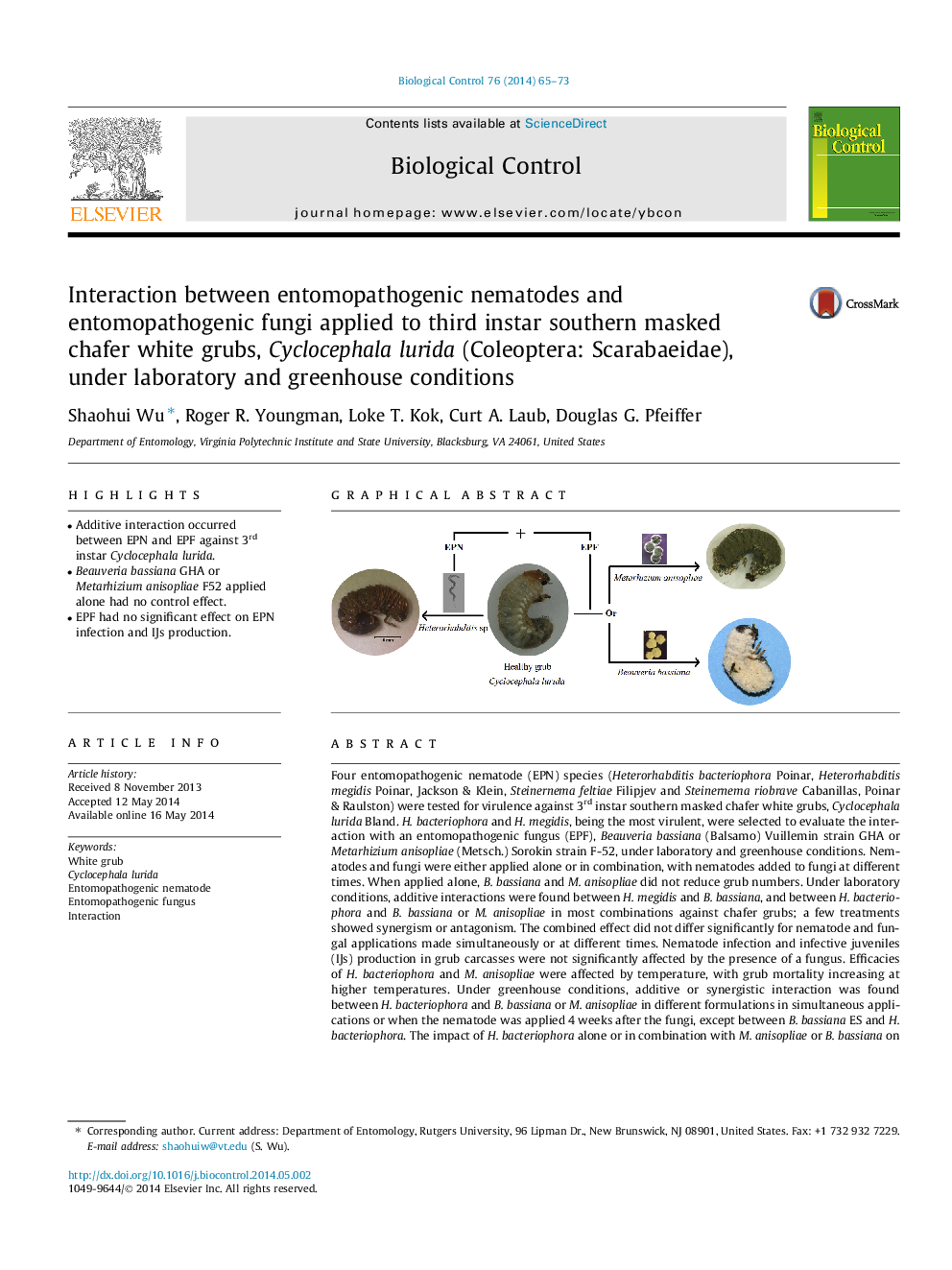| Article ID | Journal | Published Year | Pages | File Type |
|---|---|---|---|---|
| 4503885 | Biological Control | 2014 | 9 Pages |
•Additive interaction occurred between EPN and EPF against 3rd instar Cyclocephala lurida.•Beauveria bassiana GHA or Metarhizium anisopliae F52 applied alone had no control effect.•EPF had no significant effect on EPN infection and IJs production.
Four entomopathogenic nematode (EPN) species (Heterorhabditis bacteriophora Poinar, Heterorhabditis megidis Poinar, Jackson & Klein, Steinernema feltiae Filipjev and Steinernema riobrave Cabanillas, Poinar & Raulston) were tested for virulence against 3rd instar southern masked chafer white grubs, Cyclocephala lurida Bland. H.bacteriophora and H. megidis, being the most virulent, were selected to evaluate the interaction with an entomopathogenic fungus (EPF), Beauveria bassiana (Balsamo) Vuillemin strain GHA or Metarhizium anisopliae (Metsch.) Sorokin strain F-52, under laboratory and greenhouse conditions. Nematodes and fungi were either applied alone or in combination, with nematodes added to fungi at different times. When applied alone, B. bassiana and M. anisopliae did not reduce grub numbers. Under laboratory conditions, additive interactions were found between H. megidis and B. bassiana, and between H. bacteriophora and B. bassiana or M. anisopliae in most combinations against chafer grubs; a few treatments showed synergism or antagonism. The combined effect did not differ significantly for nematode and fungal applications made simultaneously or at different times. Nematode infection and infective juveniles (IJs) production in grub carcasses were not significantly affected by the presence of a fungus. Efficacies of H. bacteriophora and M. anisopliae were affected by temperature, with grub mortality increasing at higher temperatures. Under greenhouse conditions, additive or synergistic interaction was found between H. bacteriophora and B. bassiana or M. anisopliae in different formulations in simultaneous applications or when the nematode was applied 4 weeks after the fungi, except between B. bassiana ES and H. bacteriophora. The impact of H. bacteriophora alone or in combination with M. anisopliae or B. bassiana on 3rd instar C. lurida was comparable to that of an imidacloprid insecticide used as curative applications. More virulent fungal strains or species may be required to achieve a stronger interaction with nematodes in the management of C. lurida.
Graphical abstractFigure optionsDownload full-size imageDownload as PowerPoint slide
